Breathtaking
High, dry, cold, hot: the Argentine Puna is inhospitable in many ways, but above all, it is absurdly beautiful. Travel journalist Jurriaan Teulings made a road trip through the tenious desert, and wrote an article about it for our Magia Latina Magazine.
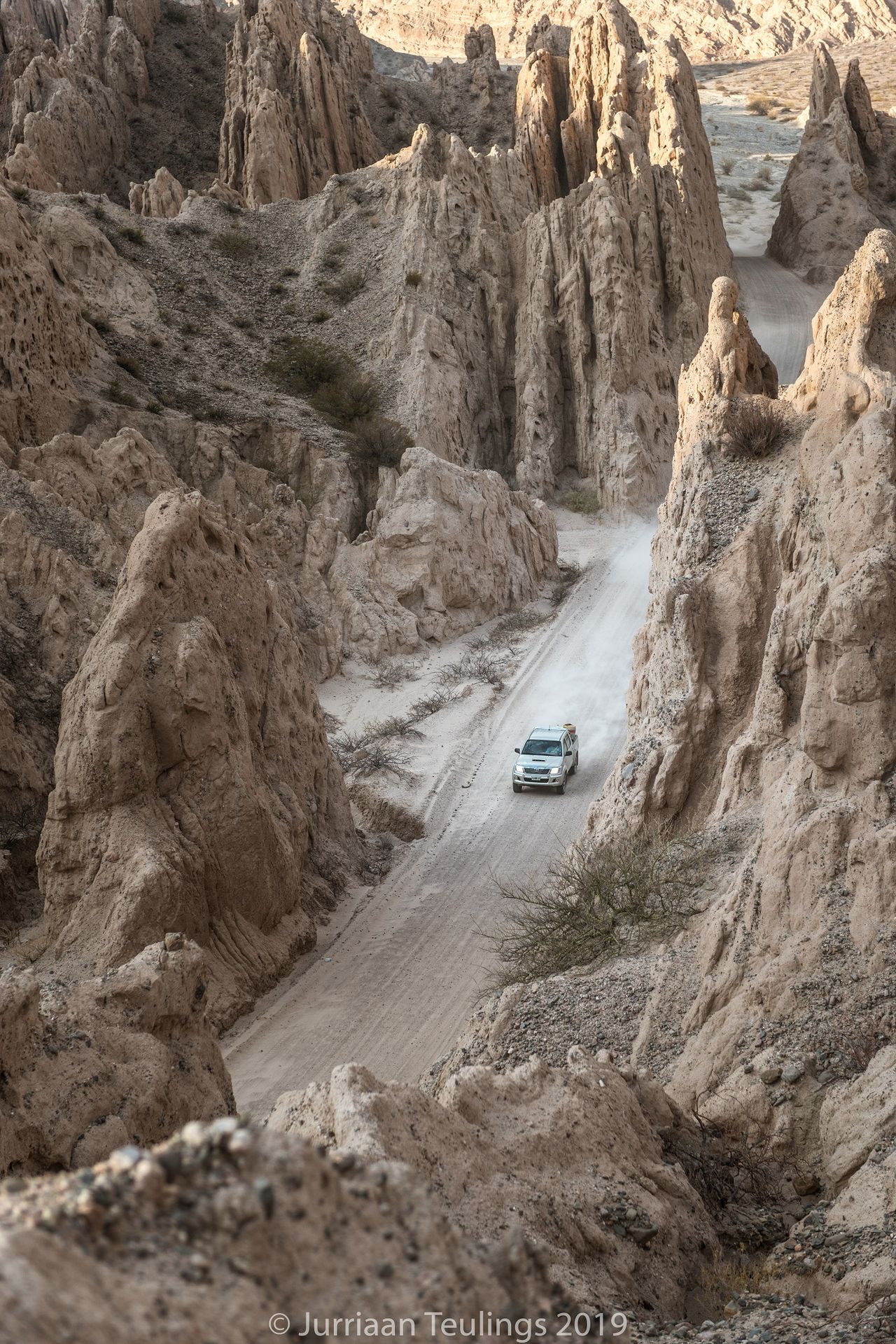
Breathtaking
In February 2011, after an estimation error on Google Maps, I sent myself and my Russian travelling companion Alex in an old Fiat Uno over an unpaved mountain pass of 4,972 metres. In the afternoon we left Cafayate, a cosy village among the vineyards in the foothills of the Argentine Andes, and followed a stretch of the legendary Ruta 40, a largely unpaved, 5,000-kilometre long route that stretches south from the Bolivian border to the glaciers of Patagonia. Where we were now, the route followed ancient Inca routes through fabulously strange landscapes. It tasted like more. However, the damned mountain pass turned out to be the highest point in the whole of Ruta 40: the Abra del Acay. Approximately 200 metres higher than Mont Blanc, barely in use and its condition is not too good.
Alex proved his thesis that whoever can cope with Moscow's traffic can cope with the whole world. With a lot of cursing and restarting, we reached the thin mountain peak and so, a few exciting hours later, we drove into San Antonio de los Cobres on the other side of the pass. This mining town, flogged by fierce sun and wind, is called the capital of the Argentine Puna, an enormous highland desert that stretches from the Argentine province of Catamarca northwards through Bolivia to Peru, and westwards to Chile. The landscapes carved by hundreds of millions of years of sun, wind and tectonic violence are among the most extreme on the planet. Stripped of her green uniform, Mother Earth reveals her true age on the Puna. It is as if by going off the beaten track we had entered an abstract painting. One day, I imagined, I would return here, without Fiat and with a plan.
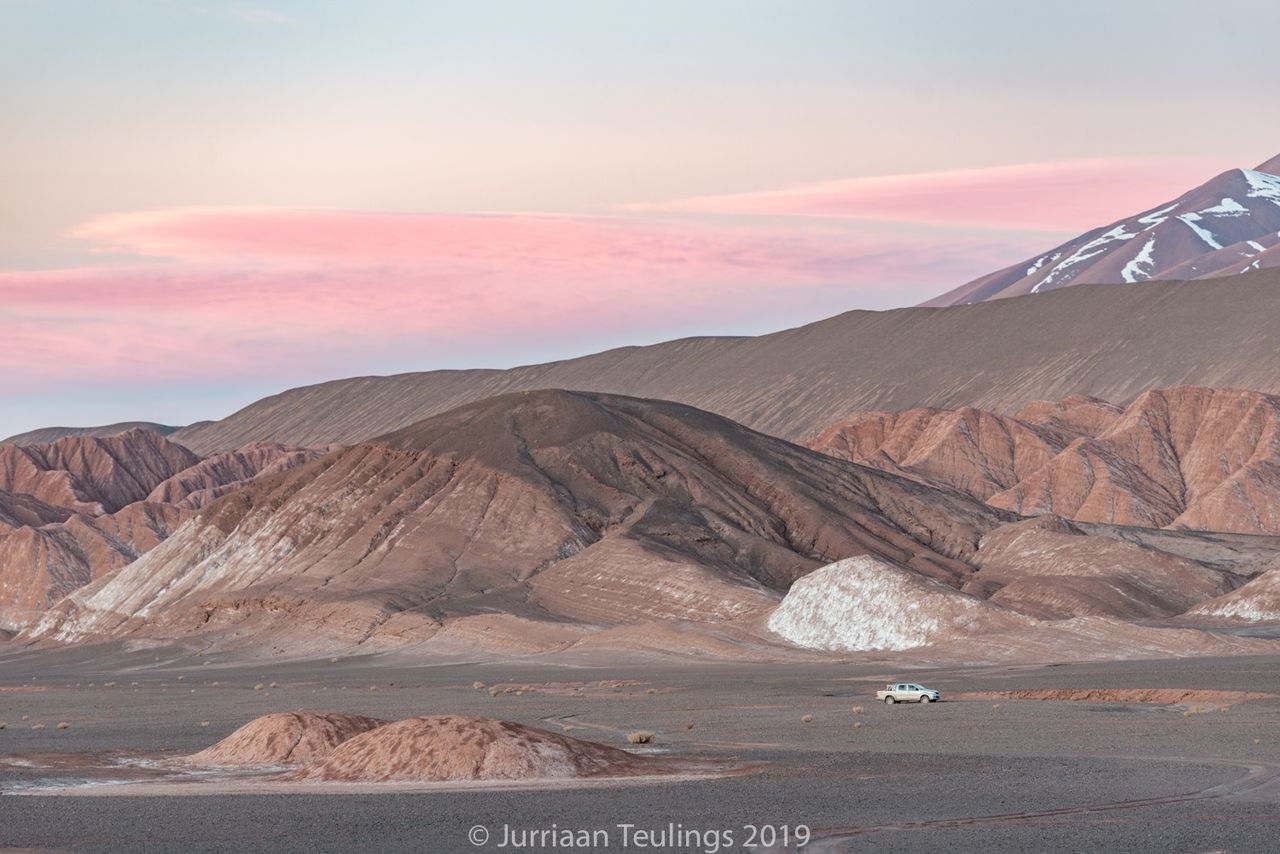
“ Stripped of her green uniform Mother Earth reveals her true age on the Puna. ”
Llama salami and goat's cheese
Six years later, Gaston, a professional guide and driver who has toured the wasteland of northern Argentina with adventurers from all over the world, is the central figure in that plan. He waits for me at Finca Valentina, a tastefully decorated boutique hotel in a farmhouse on a quiet estate an hour south of the provincial capital of Salta. His silver-grey Toyota Hilux is an off-road beast that looks as if it eats Fiatjes for lunch. It is loaded with four days of petrol and provisions. For emergencies, there is extra oxygen, a satellite phone and a device that transmits our location on a regular basis.
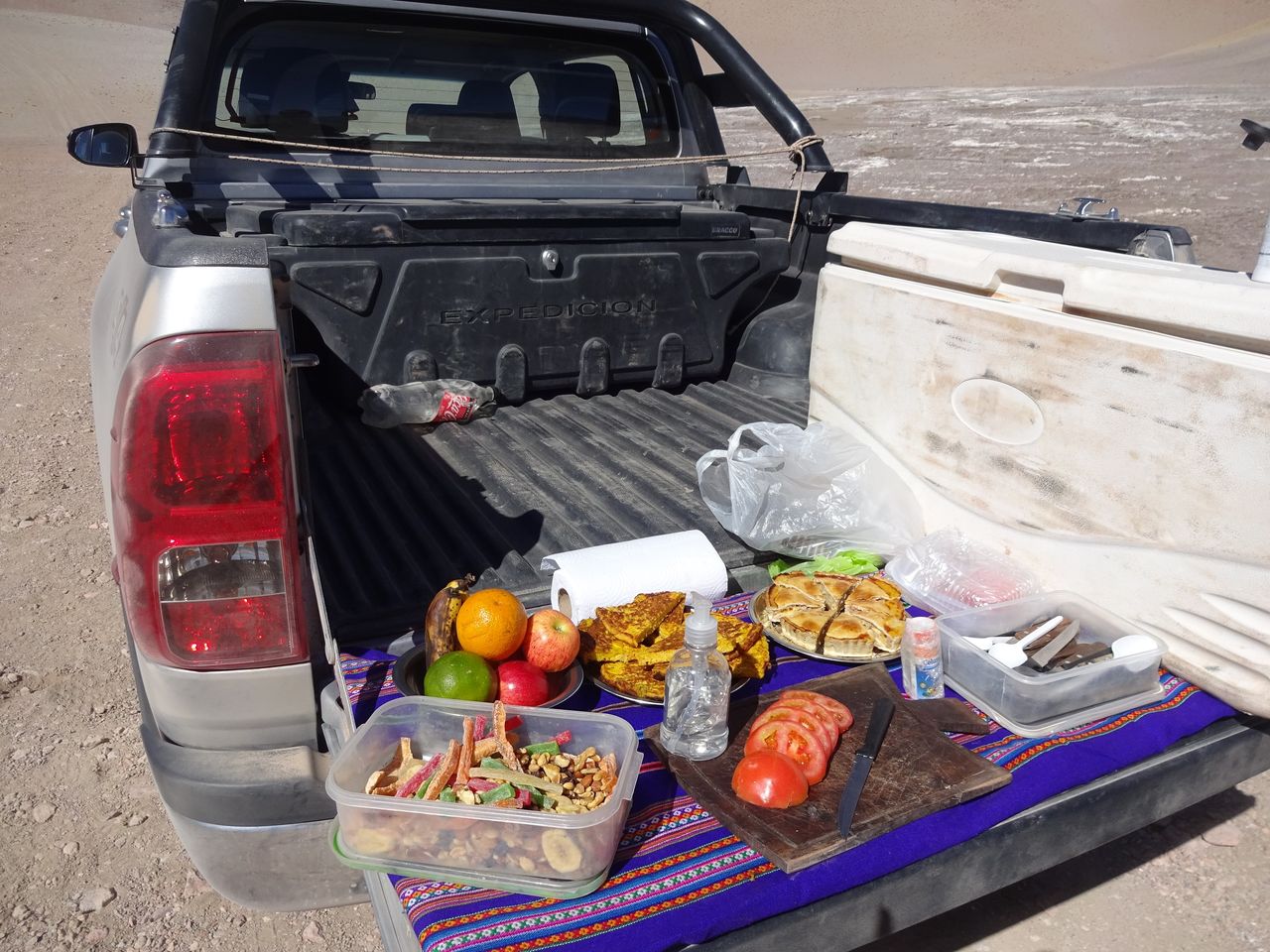
Gaston is a bear of a guy with a fine sense of music and literature. As soon as we are on our way he fills the valleys with soundtracks and stories. Those of one of Salta's literary heroes, for example, Juan Carlos Davalos. His early 20th-century novel Viento Blanco is about the Arrieros who drive their cattle through the Puna and across the Andes to Chile. Along the way, they are besieged by such strong 'white' ice winds that the animals freeze standing in them.
As we climb up through the first mountain pass - the Cuesta del Obispo - and circle the condors high above us in the air, Gaston sets up a folkloric zamba by Mercedes Sosa. Her melancholic voice seems to have been made for the desolate mountain slopes.
At the top of the Cuesta del Obispo, we take a break at a vantage point where peppers, herbs and quinoa popcorn are sold in market stalls. I have fun in the mini-library on the edge of the mountain, where the works of Nietzsche and Balzac translated into Spanish are waiting for readers. Gaston purchases goat's cheese and lamb's salami from a window on the other side and presents them on a shelf on the bonnet.

One day, four seasons
At Cachi, we drive up the Ruta 40 and follow the route south, past Colomé, Argentina's oldest and most remote winery. Near Cafayate, the landscape suddenly ripples into sharp, wind-eroded peaks that pierce the air for tens of metres. This is the Quebrada de Las Flechas: a 15 million-year-old sandstone site raised by the rising Andes. On the road, which crosses it, the dramatic panoramas follow each other in rapid succession. Gaston fills them with O Sole Mio of the Three Tenors. After a short visit to Quilmes, the largest pre-Columbian excavation in Argentina, we leave the Ruta 40 and head west towards the Andes. An enormous white sand dune marks the beginning of the Puna.
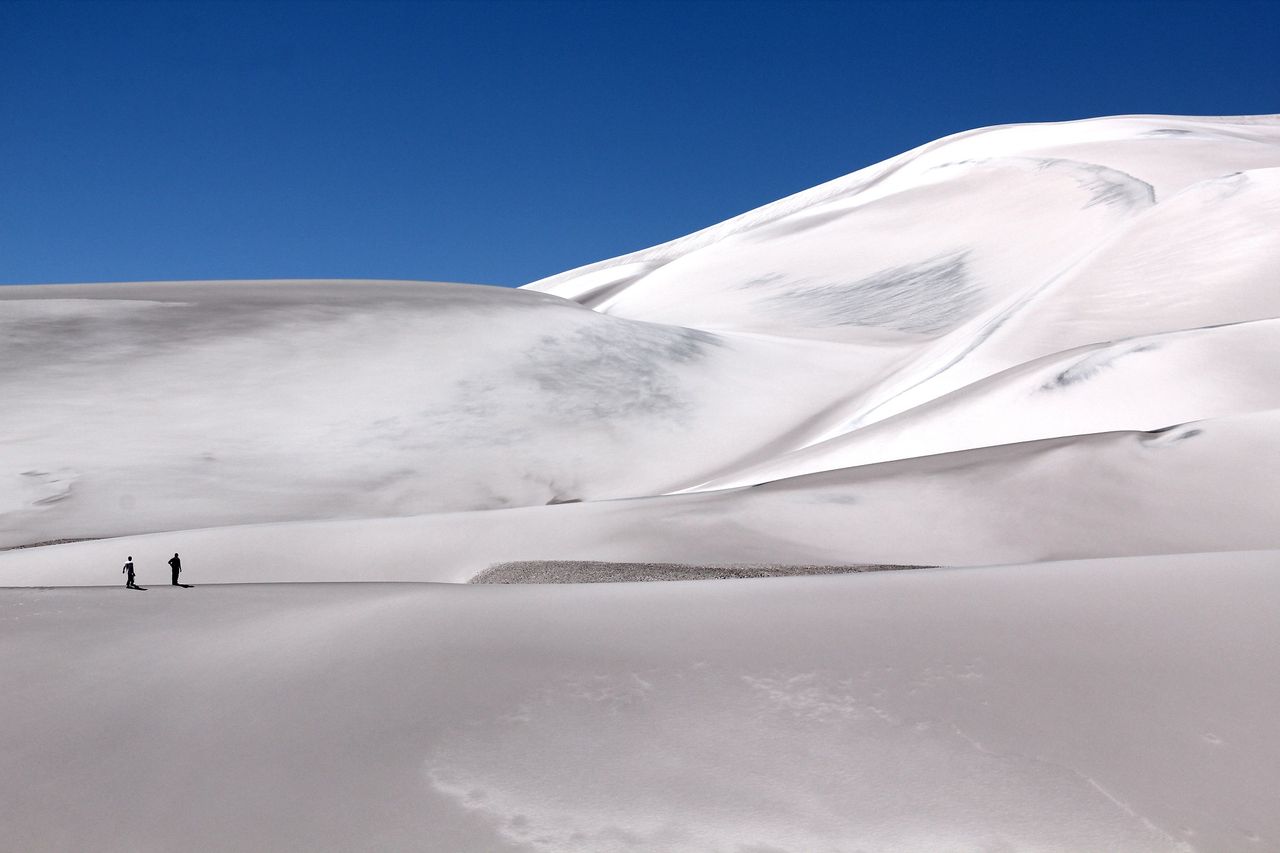
"Prepare yourself for the fact that from now on we will probably hardly see any people anymore," says Gaston. That night we stay in Hosteria de Altura, a surprisingly cosy and comfortable little hotel in the tiny village of El Peñon - which indeed seems to be extinct. We raise the wood-burning stoves that keep our rooms warm through large steel pipes and go to bed early.

Monochrome landscape
If the alarm goes off an hour before sunrise, it freezes outside that it is cracking. It is sometimes said that the Puna covers four seasons in one day: spring between 8 a.m. and 11 a.m., then summer until 4 p.m., autumn until 7 a.m. and then a harsh winter. Under an ice-cold starry sky, we drive out of the village, down the road, until all that remains is a track in the sand. Gaston breaks the sleepy silence between us with Dos Gardenias of the Buena Vista Social Club and sings softly along. The moon dives away behind an elongated shadow on the horizon that turns out to be closer to a white-pink labyrinth of pumice stone: the Campo de Piedra Pómez. It's minus 12. We put on two winter coats and walk in the dark through a sculpture garden carved by the wind and a pumice stone formation that resembles the Sphinx of Giza. The sunrise appears to be more than worth our hardship: the pumice stone absorbs the full palette of dawn and glows from blue to pink, to orange and yellow.
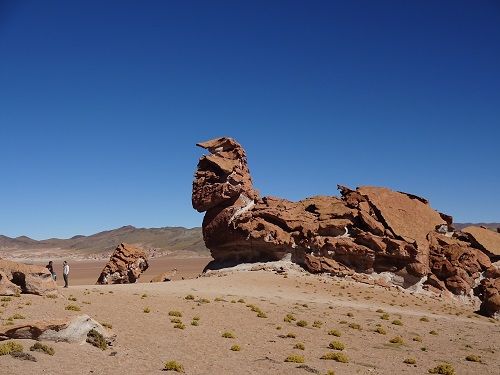
The rest of the afternoon we spend around Carachi Pampa, a jet-black, elongated volcano on the horizon. The surrounding landscape is pornography for geologists. On one side of the volcano a monochrome landscape of hail-white dunes reveals itself, and on the other side, under a red mountain range, a lagoon with pink flamingos. The bank creaks with salt and other crystallised minerals which are brought in by small steaming streams from beneath the volcano. Gaston has a surprise in store. He conjures up a table with a champagne lunch. We now walk in T-shirts.
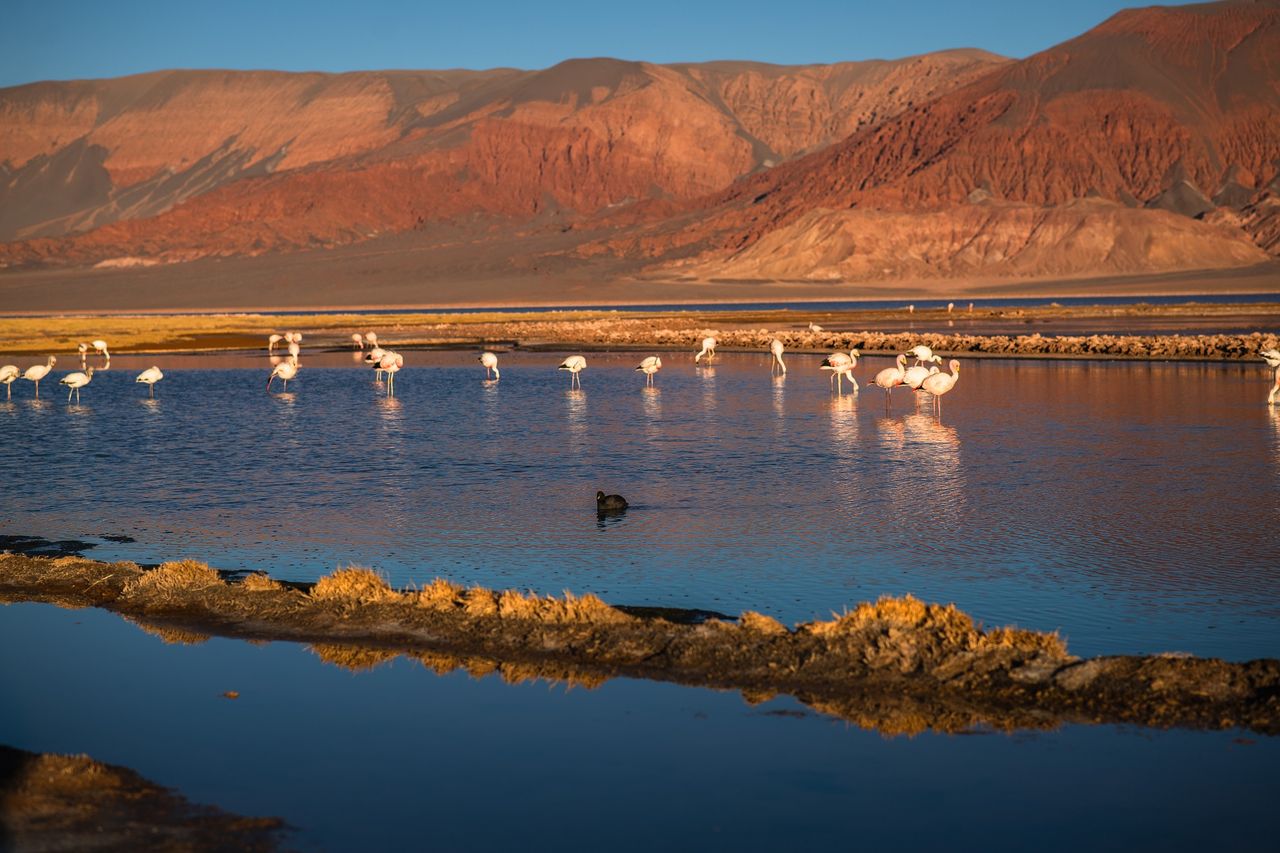
Llama's stew
The second night in El Peñon I sleep like a log. Then follows a long drive of 340 kilometres, first crossing the highest point of the route - 4,635 metres - and then two enormous salt plains. The first, the Salar de Antofalla, is the longest in the world: a 150-kilometre tongue licking red mountainsides and pitch-black lava fields. Its vastness and emptiness feel post-apocalyptic as if the rest of the world has ceased to exist. After crossing the plain we have lunch in Antofalla, a tiny community of shepherds on the edge of the plain. The lunch is a simple but surprisingly tasteful llama stew. The restaurant owner tells us that he finally managed to kill the puma that ate 23 of his 60 sheep, and in turn ate them. In this desert, nothing is forgiven, and nothing is wasted.
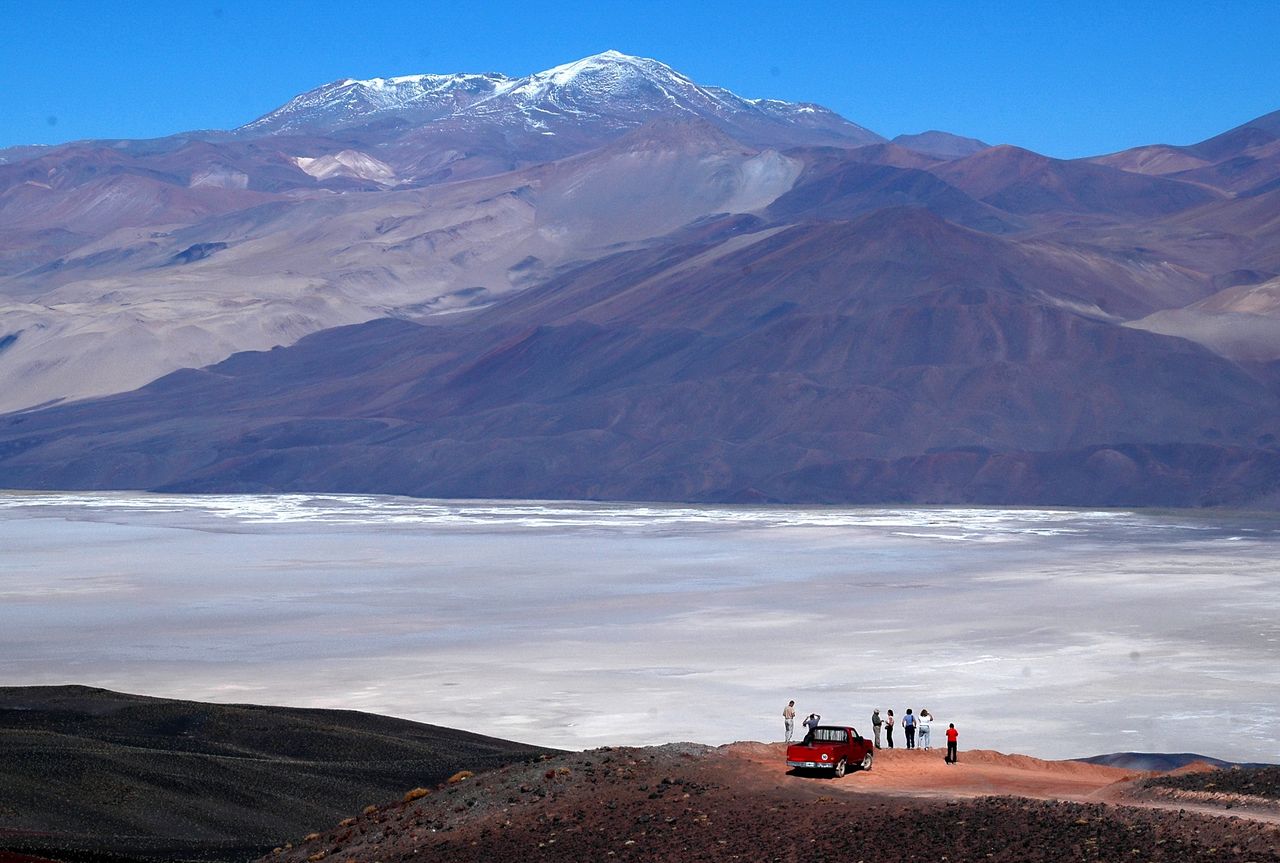
“ In this desert, nothing is forgiven, nothing is wasted. ”
Half an hour's drive away is Antofallita, a hamlet of two houses. Gaston tells that they are inhabited by a brother and sister in their eighties who cannot see or air each other. They haven't exchanged a word for decades. The sister, Corina, still wants to chat with passing travellers, but when we stop to see her, she doesn't appear to be anywhere. There is a pile of recently chopped wood. I think of my own eighty-year-old mother and I try to imagine her with an axe in this desert. A feral hangover pops up and meows lamentably as if it were our fault that the animal has been bored to death.
Intergalactic commuter
The second salt lake, Arizaro, appears to be one of the most surrealistic locations along the route. Straight out of the middle of the white plain a dark cone rises 122 metres into the sky. It is the Cono de Arita, a volcano roughly the size of the pyramid of Cheops. Wild speculations are circulating about the cone. It is said to have been a sanctuary for pre-Columbian peoples and to attract UFOs. Not illogical in itself: as tired intergalactic commuters, you could easily confuse this strange valley with your driveway in the Seven Sphere.

Our final destination, the railway village of Tolar Grande, is behind a barrier of reddish-brown hills. We arrive there at dusk, after having braved the cutting winds to climb one of the higher hills and watch the sun disappear behind a row of volcanic giants on the border with Chile. The next morning we prepare for a return to civilization. First, we pass Ojos del Mar, a series of salt lakes. Just under a decade ago, coral-like limestone deposits of bacteria that are among the oldest forms of life on earth were discovered here. On the other side, the reddish-brown ridge reflected in the lakes ends in Desierto del Laberinto, a labyrinth of sand and clay that looks as if it were made from melted milk chocolate. The soundtrack comes from Sia, whose husky, dreamy Breathe Me is a perfect ending to our journey through the thin highlands.

When we arrive in San Antonio de los Cobres we are so alienated from the inhabited world that the mining village looks like a swirling metropolis. Gaston, who by now knows the story of the Fiat Uno, points with a big grin to the road that leads from here up to the Abra del Acay. Would he have dared to do it in a Fiat? He shakes his head. "I'm not crazy."
LatinAmeriCar - Exclusive car trips
Based on our experiences we have created a special series of car journeys with Sapa Pana Travel, called LatinAmeriCar. During our exclusive car trips, you will drive a route through Latin America in your own or rental car. During these journeys, you will always have back up from an experienced team of guides and an expert technical team who have had these kinds of experiences themselves. It is a true adventure where things don't always go as planned, just because we don't always have everything under control. However, with our people, you will have the optimal support to bring this adventure to a successful conclusion, so that you will cherish this experience for the rest of your life!
More about LatinAmeriCar
Would you like to discover this area of the Puna yourself? In November 2021 we offer you the opportunity for the ultimate off road driving experience during the Atacama & Puna Experience. Your driving skills will be tested under expert guidance at high altitudes above 4.000 meters, over vast salt plains, through desolate deserts and through narrow mountain passes. In the backdrop of breathtaking landscapes you will experience an experience like you have never experienced before. A unique travel experience written in golden letters.
See the page about this tour for more information. Do you have questions about this unique journey? Feel free to contact us. Send an e-mail to info@sapapanatravel.nl or call us on +31 73 610 62 04. We are happy to help.